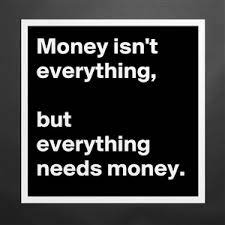
By Amy Miller, AFC®
I read a meme earlier today on social media that stated, “money isn’t everything, but everything needs money”. I thought, wow, that is SO TRUE! We do need money for everything in our lives. That thought and with Veteran’s Day approaching, I decided to take this first week of November to talk about Veterans & Money…….
Let’s start by taking a minute to discuss what monetary benefits veterans are receiving.
Veteran pay benefits date to the 1818 Service Pension Law that provided that every person who had served in the war for independence and was in need of assistance would receive a pension for life. The rate was $20 per month for officers and $8 for enlisted. Prior to this, pension was only paid to disabled veterans. That was one of the first (of many) pension laws that were passed and enacted to get us to our current system.
Veterans that have served the full 20 years or more and were enlisted prior to December 31, 2017 qualify for the lifetime monthly annuity. This benefit, also called “high-36” or “military retired pay” is determined by the years of service. Veterans may also be eligible for Supplemental Security Income (SSI) or Social Security Disability Insurance (SSDI), in conjunction with or as an alternative to VA disability payments. Veterans that paid into the system have been eligible to receive this pay just like civilians since 1957. Compensation from the VA is paid on a graduated scale, based upon the disability. Alternately, SSI & SSDI does not pay on a scale and do not require the disability to be service-connected.
So how are veterans receiving these benefits? They have a few options and can make their selection by logging into their VA online account. Funds can be electronically deposited into a checking or savings account, loaded on a pre-paid debit card, or delivered by paper check. It is important to note that a paper check requires a waiver from the Treasury.
There is an estimated 150,000 veterans or beneficiaries that are choosing to receive their benefits via a paper check or on a pre-paid card. This is a concerning number. Aside from the difficulty of the waiver process, receiving a paper check adds unnecessary steps that may be hard for some veterans to overcome. First, they must wait to receive the check in the mail and then make it to a bank or check cashing facility to receive the funds – sometimes paying a fee(s). Not to mention the possibility of the check being lost in the mail or worse, stolen – opening the veteran up to fraud and not being able to access their benefits until they complete the stolen check process, possibly leaving them with no funds for living and expenses. Direct Express Pre-Paid cards are a better alternative but still fall short of the conveniences and safety of a checking or savings account at a financial institution. These cards only allow government funds to be deposited, have no check writing or bill pay options, and only allow 1 free cash withdrawal from an ATM per month.
In contrast, most traditional checking and savings accounts are free or can be free when certain criteria are met (direct deposit, minimum balance, multiple accounts, etc.) and most institutions have some sort of online banking available for checking balances, making transfers, and paying bills – making this the best all-around option.
Knowing the barriers that some could face when receiving the paper check or pre-paid debit card, the AMBA and the VA wanted to act to address the need to inform veterans of their options and empower them to make sound financial decisions. They did so by partnering to create the Veteran’s Benefits Banking Program (VBBP). This partnership has brought together a group of banks and credit unions that have agreed to provide services to military members. By opening a transaction account with the VBBP participating institutions and setting up direct deposit, this program will help assist in removing those roadblocks and connect veterans with banks and credit unions specializing in their unique needs.
You can learn more about VBBP by visiting the Veterans Benefits Banking Program. There you can find a list of the banks and credit unions that are ready to serve our veterans and their families. You can also review the comparison tool that outlines the features of each option available for receiving benefits here: https://veteransbenefitsbanking.org/about-us/